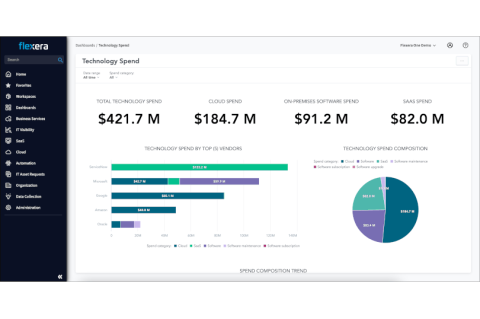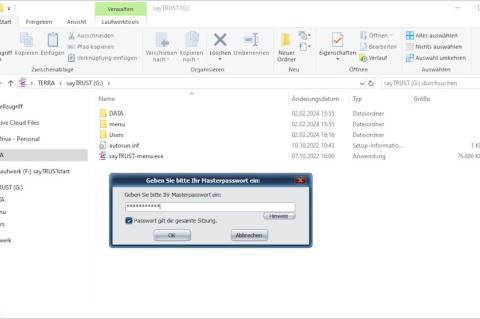Die I-Serie beschäftigt sich mit ISDN.
General structure
Terminology
I.112
Vocabulary of terms for ISDNs
I.113
Vocabulary of terms for broadband aspects of ISDN
I.114
Vocabulary of terms for universal personal telecommunication
Description of ISDNs
I.120
Integrated services digital networks (ISDNs)
I.121
Broadband aspects of ISDN
I.122
Framework for frame mode bearer services
General modelling methods
I.130
Method for the characterization of telecommunication services supported by an ISDN and network capabilities of an ISDN
Telecommunication network and service attributes
I.140
Attribute technique for the characterization of telecommunication services supported by an ISDN and network capabilities of an ISDN
I.141
ISDN network charging capabilities attributes
General description of asynchronous transfer mode
I.150
B-ISDN asynchronous transfer mode functional characteristics
Service capabilities
Scope
I.200
Guidance to the I.200-Series of Recommendations
General aspects of services in ISDN
I.210
Principles of telecommunication services supported by an ISDN and the means to describe them
I.211
B-ISDN service aspects
Common aspects of services in the ISDN
I.220
Common dynamic description of basic telecommunication services
I.221
Common specific characteristics of services
Bearer services supported by an ISDN
I.230
Definition of bearer service categories
I.231 Circuit-mode bearer service categories
I.231.1
Circuit-mode 64 kbit/s unrestricted, 8 kHz structured bearer service
I.231.2
Circuit-mode 64 kbit/s, 8 kHz structured bearer service usable for speech information transfer
I.231.3
Circuit-mode 64 kbit/s, 8 kHz structured bearer service usable for 3.1 kHz audio information transfer
I.231.4
Circuit-mode, alternate speech / 64 kbit/s unrestricted, 8 kHz structured bearer service
I.231.5
Circuit-mode 2 x 64 kbit/s unrestricted, 8 kHz structured bearer service
I.231.6
Circuit-mode 384 kbit/s unrestricted, 8 kHz structured bearer service
I.231.7
Circuit-mode 1536 kbit/s unrestricted, 8 kHz structured bearer service
I.231.8
Circuit-mode 1920 kbit/s unrestricted, 8 kHz structured bearer service
I.231.9
Circuit mode 64 kbit/s 8 kHz structured multi-use bearer service
I.231.10
Circuit-mode multiple-rate unrestricted 8 kHz structured bearer service
I.232 Packet-mode bearer services categories
I.232.1
Virtual call and permanent virtual circuit bearer service category
I.232.2
Connectionless bearer service category.
This service has only been identified and requires further study
I.232.3
User signalling bearer service category (USBS)
I.233 Frame mode bearer services
I.233.1
ISDN frame relaying bearer service Published with I.233
I.233.1 Annex F
Frame relay multicast
I.233.2
ISDN frame switching bearer service Published with I.233
Teleservices supported by an ISDN
I.240
Definition of teleservices
I.241 Teleservices supported by an ISDN
I.241.1
Telephony
I.241.2
Teletex
I.241.3
Telefax 4
I.241.4
Mixed mode
I.241.5
Videotex
I.241.6
Telex
I.241.7
Telephony 7 kHz teleservice
I.241.8
Teleaction stage one service description
Supplementary services in ISDN
I.250
Definition of supplementary services
I.251 Number identification supplementary services
I.251.1
Direct-dialling-In
I.251.2
Multiple Subscriber Number
I.251.3
Calling Line Identification Presentation
I.251.4
Calling Line Identification Restriction
I.251.5
Connected Line Identification Presentation (COLP)
I.251.6
Connected Line Identification Restriction (COLR)
I.251.7
Malicious call Identification
I.251.8
Sub-addressing supplementary service
I.251.9
Calling name identification presentation
I.251.10
Calling name identification restriction
I.252 Call offering supplementary services
I.252.1
Call Transfer (CT)
I.252.2
Call Forwarding Busy
I.252.3
Call Forwarding No Reply
I.252.4
Call Forwarding Unconditional
I.252.5
Call Deflection
I.252.6
Line Hunting (LH)
I.253 Call completion supplementary services
I.253.1
Call waiting (CW) supplementary service
I.253.2
Call Hold
I.253.3
Completion of calls to busy subscribers
I.253.4
Completion of calls on no reply
I.254 Multiparty supplementary services
I.254.1
Conference calling (CONF)
I.254.2
Three-Party Supplementary Service
I.255 Community of interest supplementary services
I.255.1
Closed User Group
I.255.2
Support of Private Numbering Plans
I.255.3
Multi-level precedence and preemption service (MLPP)
I.255.4
Priority service
I.255.5
Outgoing call barring
I.256 Charging supplementary services
I.256.2a
Advice of charge: charging information at call set-up time (AOC-S)
I.256.2b
Advice of charge: charging information during the call (AOC-D)
I.256.2c
Advice of charge: charging information at the end of the call (AOC-E)
I.256.3
Reverse charging
I.257 Additional information transfer supplementary services
I.257.1
User-to-User Signalling
I.258 Mobility and modification supplementary services
I.258.1
Terminal portability (TP)
I.258.2
In-call modification (IM)
I.259 Screening supplementary services
I.259.1
Address screening (ADS)
Overall network aspects and functions
Network functional principles
I.310
ISDN - Network functional principles
I.311
B-ISDN general network aspects
I.312
Principles of intelligent network architecture
Reference models
I.320
ISDN protocol reference model
I.321
B-ISDN protocol reference model and its application
I.324
ISDN network architecture
I.325
Reference configurations for ISDN connection types
I.326
Functional architecture of transport networks based on ATM
I.327
B-ISDN functional architecture
I.328
Intelligent network - Service plane architecture
I.329
Intelligent network - Global functional plane architecture
Numbering, addressing and routing
I.330
ISDN numbering and addressing principles
I.331
Numbering plan for the ISDN era
I.333
Terminal selection in ISDN
I.334
Principles relating ISDN numbers/sub-addresses to the OSI reference model network layer addresses
Connection types
I.340
ISDN connection types
Performance objectives
I.350
General aspects of quality of service and network performance in digital networks, including ISDNs
I.351
Relationships among ISDN performance Recommendations
I.352
Network performance objectives for connection processing delays in an ISDN
I.353
Reference events for defining ISDN and B-ISDN performance parameters
I.354
Network performance objectives for packet-mode communication in an ISDN
I.355
ISDN 64 kbit/s connection type availability performance
I.356
B-ISDN ATM layer cell transfer performance
I.357
B-ISDN semi-permanent connection availability
I.358
Call processing performance for switched virtual channel connections (VCCs) in a B-ISDN
I.359
Accuracy and dependability of ISDN 64 kbit/s circuit-mode connection types
Protocol layer requirements
I.361
B-ISDN ATM layer specification
I.362
[Withdrawn] B-ISDN ATM adaptation layer (AAL) functional description
Deleted, since the service classes defined therein were no longer appropriate and were in conflict with F-Series Recommendations.
I.363 B-ISDN ATM Adaptation Layer specification
I.363.1
Types 1 and 2 AAL
I.363.3
Types 3/4 AAL
I.363.5
Type 5 AAL
I.364
Support of the broadband connectionless data bearer service by the B-ISDN
I.365 B-ISDN ATM adaptation layer sublayers
I.365.1
Frame relaying service specific convergence sublayer (FR-SSCS)
I.365.2
Service specific coordination function to provide the connection-oriented network service
I.365.3
Service specific coordination function to provide the connection-oriented transport service
I.365.4
Service specific coordination function for HDLC applications
I.366.1
Segmentation and Reassembly Service Specific Convergence Sublayer for the AAL type 2
I.366.2
AAL type 2 service specific convergence sublayer for narrow-band services
General network requirements and functions
I.370
Congestion management for the ISDN frame relaying bearer service
I.371
Traffic control and congestion control in B-ISDN
I.371.1
Guaranteed frame rate ATM transfer capability
I.372
Frame relaying bearer service network-to-network interface requirements
I.373
Network capabilities to support universal personal telecommunication (UPT)
I.374
Framework Recommendation on "network capabilities to support multimedia services"
I.375.1
General aspects
I.375.2
Example of multimedia retrieval service class - Video-on-demand service using an ATM based network
I.375.3
Example of multimedia distribution service class - Switched digital broadcasting
I.376
ISDN network capabilities for the support of teleaction service
I.380
Internet protocol data communication service - IP packet transfer and availability performance parameters
This Recommendation was first approved and published as I.380, and then renumbered as Y.1540 on 2000-03-10 without further modification
I.381
ATM Adaptation Layer (ALL) performance
ISDN user-network interfaces
I.410
General aspects and principles relating to Recommendations on ISDN user-network interfaces
I.411
ISDN user-network interfaces - Reference configurations
I.412
ISDN user-network interfaces - Interface structures and access capabilities
I.413
B-ISDN user-network interface
I.414
Overview of Recommendations on layer 1 for ISDN and B-ISDN customer accesses
Application of I-series Recommendations to ISDN user-network interfaces
I.420
Basic user-network interface
I.421
Primary rate user-network interface
Layer 1 Recommendations
I.430
Basic user-network interface - Layer 1 specification
I.431
Primary rate user-network interface - Layer 1 specification
I.432 B-ISDN User-Network Interface - Physical layer specification
I.432.1
General characteristics
I.432.2
155 520 kbit/s and 622 080 kbit/s operation
I.432.3
1544 kbit/s and 2048 kbit/s operation
I.432.4
51 840 kbit/s operation
I.432.5
25 600 kbit/s operation
Layer 2 Recommendations
I.440
ISDN user-network interface data link layer - General aspects
I.441
ISDN user-network interface - Data link layer specification
Layer 3 Recommendations
I.450
ISDN user-network interface layer 3 - General aspects
I.451
ISDN user-network interface layer 3 specification for basic call control
I.452
Generic procedures for the control of ISDN supplementary services
Multiplexing, rate adaption and support of existing interfaces
I.460
Multiplexing, rate adaption and support of existing interfaces
I.461
Support of X.21, X.21 bis and X.20 bis based Data Terminal Equipments (DTEs) by an Integrated Services Digital Network (ISDN)
I.462
Support of packet mode terminal equipment by an ISDN
I.463
Support of data terminal equipments with V-series type interfaces by an integrated services digital network
I.464
Multiplexing, rate adaption and support of existing interfaces for restricted 64 kbit/s transfer capability
I.465
Support by an ISDN of data terminal equipment with V-series type interfaces with provision for statistical multiplexing
Aspects of ISDN affecting terminal requirements
I.470
Relationship of terminal functions to ISDN
I.480
1+1 protection switching for cell-based physical layer
Internetwork interfaces
I.500
General structure of the ISDN interworking Recommendations
I.501
Service interworking
I.510
Definitions and general principles for ISDN interworking
I.511
ISDN-to-ISDN layer 1 internetwork interface
I.515
Parameter exchange for ISDN interworking
I.520
General arrangements for network interworking between ISDNs
I.525
Interworking between networks operating at bit rates less than 64 kbit/s with 64 kbit/s-based ISDN and B-ISDN
I.530
Network interworking between an ISDN and a public switched telephone network (PSTN)
I.555
Frame relaying bearer service interworking
I.570
Public/private ISDN interworking
I.571
Connection of VSAT based private networks to the public ISDN
I.572
VSAT interconnection with the PSTN
I.580
General arrangements for interworking between B-ISDN and 64 kbit/s based ISDN
I.581
General arrangements for B-ISDN interworking
Maintenance principles
I.601
General maintenance principles of ISDN subscriber access and subscriber installation
I.610
B-ISDN operation and maintenance principles and functions
I.620
Frame relay operation and maintenance principles and functions
I.630
ATM protection switching
B-ISDN equipment aspects
ATM equipment
I.731
Types and general characteristics of ATM equipment
I.732
Functional characteristics of ATM equipment
I.741
Interworking and interconnection between ATM and switched telephone networks for the transmission of speech, voiceband data and audio signals
Management of ATM equipment
I.751
Asynchronous transfer mode management of the network element view
I.761
Inverse multiplexing for ATM (IMA)
I.762
ATM over fractional physical links
Supplements
I.Sup1
Generic service descriptions for ten supplementary services defined in I.250-Series Recommendations


